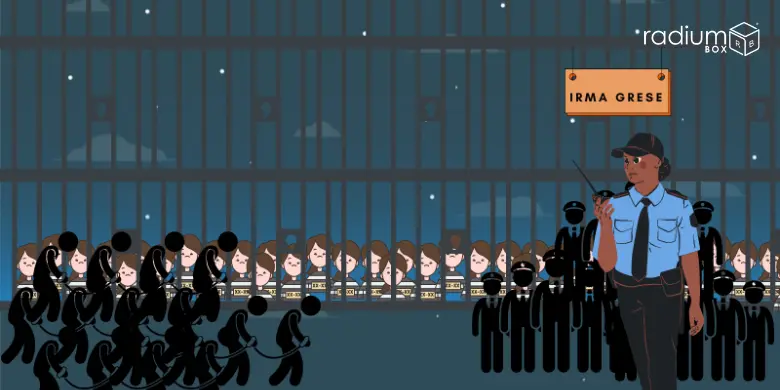The horrors of the Nazi regime during World War II are well documented, but few people know the stories of the individuals who carried out the atrocities. Irma Grese, one of the most notorious female SS guards in Nazi concentration camps, was responsible for inflicting unimaginable pain and suffering on countless prisoners. Despite her young age, Irma Grese’s cruelty earned her the nickname “The Hyena of Auschwitz.” In this article, we will delve into the life of Irma Grese and examine the role she played in one of the darkest periods in human history.
Who was Irma Grese?
Irma Grese was born on October 7, 1923, in a town named Wrechen, Germany. She was the third of five children and grew up in a poor family. Grese left school at the age of 15 and began working as a nurse’s assistant. In 1942, at the age of 19, she joined the Nazi SS and was posted to Ravensbrück concentration camp, where she worked as a guard. Over the next two years, she was transferred to several other camps, including Auschwitz and Bergen-Belsen.
Grese’s Role in Auschwitz
While working at Auschwitz, Grese was responsible for selecting prisoners for the gas chambers, conducting roll calls, and overseeing the work details. She also took part in medical experiments on prisoners, including injecting them with lethal substances. Grese gained a reputation for her cruelty towards prisoners, particularly women, whom she would often beat and torture for her own amusement.
Life in Bergen-Belsen
In 1945, Grese was transferred to Bergen-Belsen concentration camp, where conditions were even worse than Auschwitz. Prisoners were dying at an alarming rate due to starvation, disease, and exposure to the elements. Grese was responsible for overseeing the women’s section of the camp, and her sadistic behavior continued. She would often release dogs on prisoners or force them to stand outside naked in freezing temperatures.
Trial and Execution
After the war, Grese was captured by British forces and put on trial for her crimes. During the trial, witnesses described the horrific acts of cruelty that Grese had committed, including beating women with a whip and selecting prisoners for the gas chambers. Despite her young age, she showed no remorse for her actions and even seemed to take pleasure in describing them. At last she was found guilty and sentenced to death.
Final Moments
On December 13, 1945, Irma Grese was led to the gallows. Witnesses described her as being unrepentant until the very end. She reportedly said, “I have nothing to say. I am not afraid to die. God will have mercy on me,” before the trapdoor opened and she was hanged.
Conclusion:
The story of Irma Grese serves as a stark reminder of the horrors of the Nazi regime and the individuals who carried out their orders. Despite her young age, Grese was responsible for inflicting unimaginable pain and suffering on countless prisoners. Her cruel and sadistic behavior earned her the nickname “The Hyena of Auschwitz” and ultimately led to her execution. The world must never forget the atrocities committed during the Holocaust and must continue to work towards a future where such atrocities never happen again.




